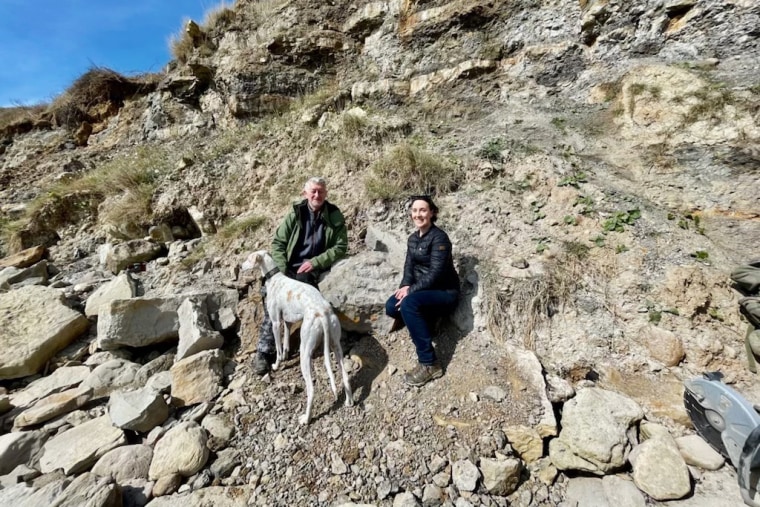BRADFORD, England — The brooding landscape of the English county of Yorkshire has perhaps been best known as the home of the gothic novels “Wuthering Heights” and “Jane Eyre” by the Brontë sisters.
But long before they put pen to paper, giant carnivorous dinosaurs roamed the area that locals refer to as “God’s own country” and one left a footprint that experts Thursday confirmed was the largest ever discovered in Yorkshire.
More than 3 feet long, the footprint was made by a meat-eating theropod dinosaur almost 166 million years ago from the Jurassic Period, according to the authors of a study published in the Proceedings of the Yorkshire Geological Society journal.
They added that they thought the dinosaur was squatting or resting when it left the three-toed footprint in the Cleveland Basin area, which is now the east coast of Yorkshire.
The footprint was serendipitously discovered in April 2021 by local archaeologist Marie Woods, while she walked along a stretch of coastline known as the Dinosaur Coast.
“As an archaeologist, I know the importance of recording objects and exploring the potential for recovery,” she told NBC News via email Thursday. “This was no exception, even though it’s not my field of expertise.”
“I contacted various local people and sent photographs and the location to see if they had come across the print before me, they all said no,” said Woods, who is also a co-author of the study.

Shortly afterward, she contacted her friend Dean Lomax, a paleontologist at The University of Manchester and a fellow author of the study.
“By studying the angle of the footprint, its shape, and the impressions of the claws, the fossil provides insights into the behavior of this individual from around 166 million years ago,” Lomax said in a statement.
“Features of the footprint may even suggest that this large predator was squatting down before standing up,” he added. “It’s fun to think this dinosaur might well have been strolling along a muddy coastal plain one lazy Sunday afternoon in the Jurassic.”
While the area is well-know for dinosaur footprints, few are found in such well preserved condition, the study said. It is one of only six similar footprints to have been recorded in the area, the first being found in 1934, it added.

A popular destination for paleontologists and fossil enthusiasts, it is considered one of the best places in the world to find footprints from the giant creatures.
After it was determined the footprint was at risk of being exposed to extensive damage by the tide or landslips, it was quickly recovered from the shoreline by a team of experienced fossil collectors.
During that time, it emerged that the footprint had been spotted five months earlier in November 2020 by a local fossil hunter and a co-author of the new study, Rob Taylor. Bit it was not fully exposed when he found it.
The footprint has been donated to a local museum for conservation purposes.
